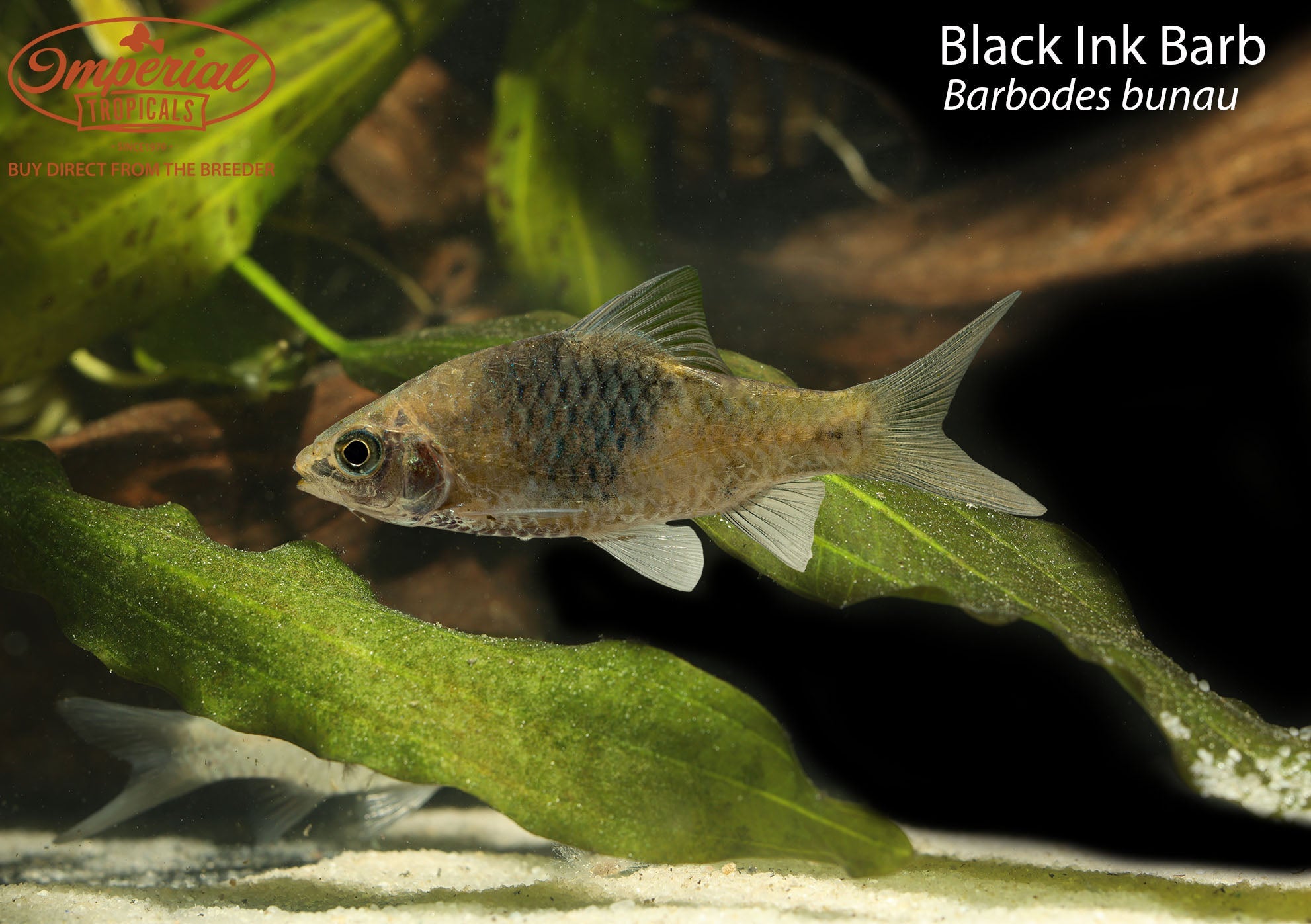
Remarks: The rare black ink barb is seldom seen in the hobby despite being a very fascinating species with beautiful and unique coloration. Mature fish will display silver heads, yellow or orange tails, and a large, dark gray or inky black patch just below the dorsal fin. This unique pattern and the endearing set of whiskers on either side of their mouths make the black ink barb a very attractive looking fish. Like with all barbs, there is little visual difference between males and females, but usually if they are ready to spawn, males will display brighter colors and females will appear more rounded.
As not many have kept this species, not much is known about their care. What is known, is that like nearly all barbs, they are best kept in groups of 6-8 or more to satisfy their need to shoal and to disperse any aggression amongst competing males. Keeping black ink barbs in large groups will also help deter them from nipping other tank mates as they will be too busy establishing their own pecking order. Native to the Sebuku and Sesayap rivers in the North Kalimantan Province in Borneo, they can be found in both clear and blackwater areas with moderate current that provides plenty of dissolved oxygen and a sandy or rocky substrate. These areas are known to have fairly soft and moderate to acidic pH along with fallen branches and plenty of vegetation. For the black ink barb to thrive in captivity, it is best to mimic their natural habitat by keeping them in similar conditions. To satisfy their omnivorous diet, those keeping this species should provide a varied and high quality diet that consists of both meat and vegetable matter.
If kept properly, the black ink barb can be a fantastic addition to those with larger South East Asian tanks or those looking for a larger, less common shoaling fish. They have potential to make great tankmates for the ever popular roseline shark as well. With their rarity, active behavior, and beautiful coloration, they can also warrant being kept in a species only tank. If this option is chosen, we encourage attempts at breeding this rare species as they are listed as vulnerable by the IUCN due to habitat destruction.